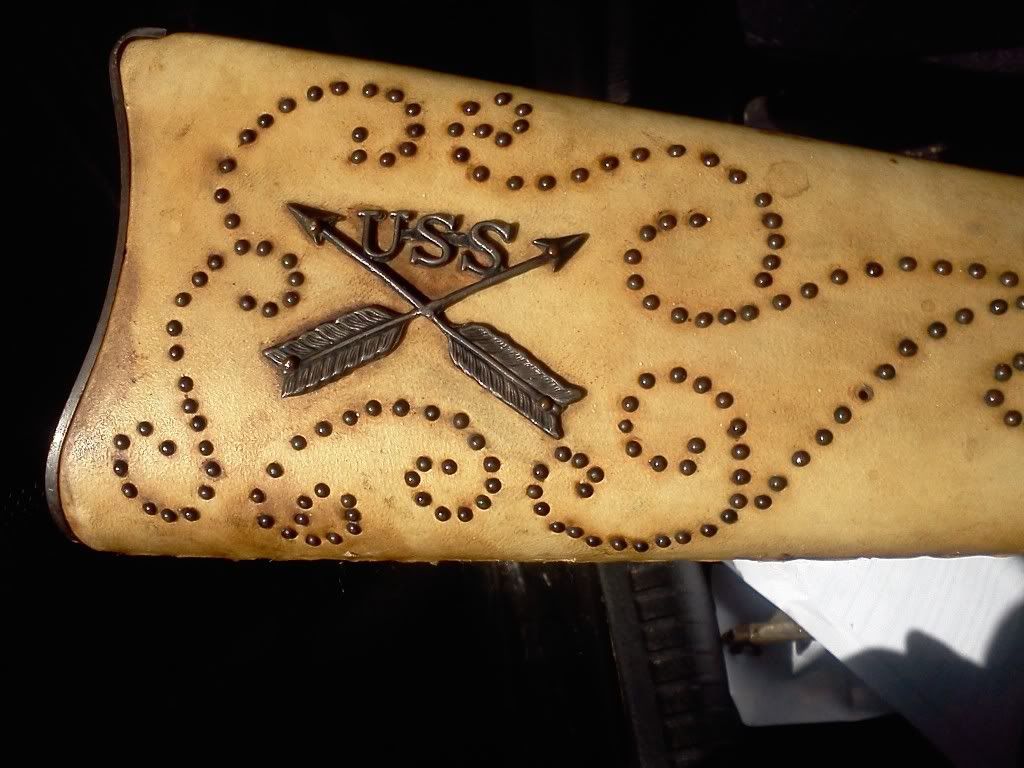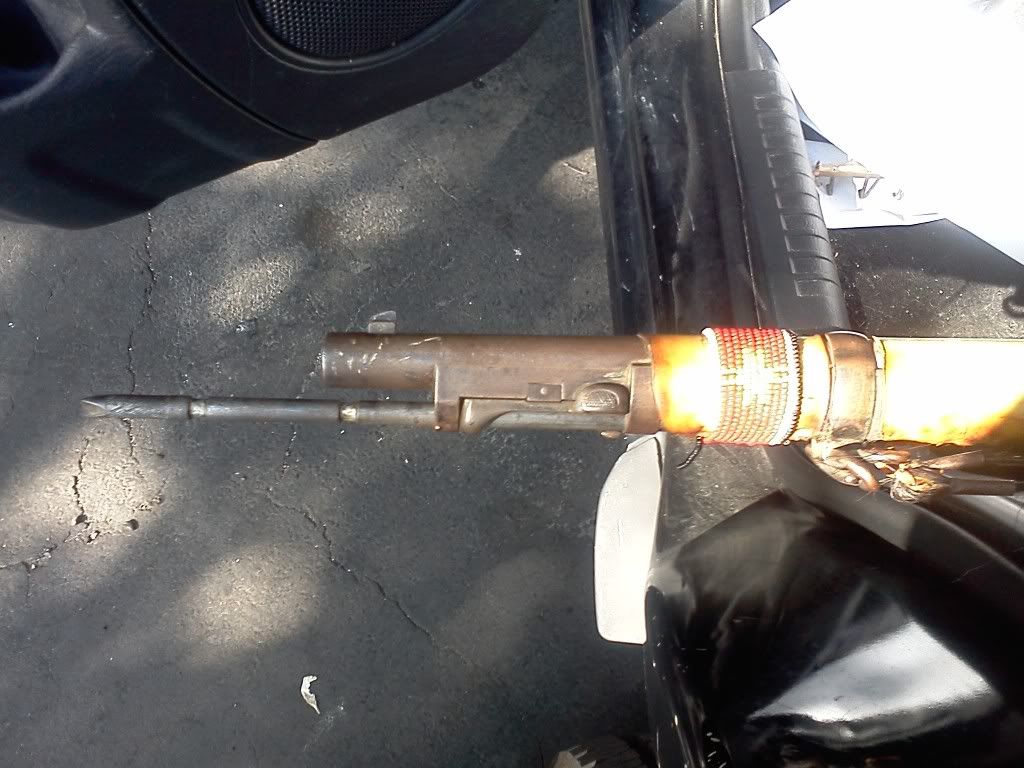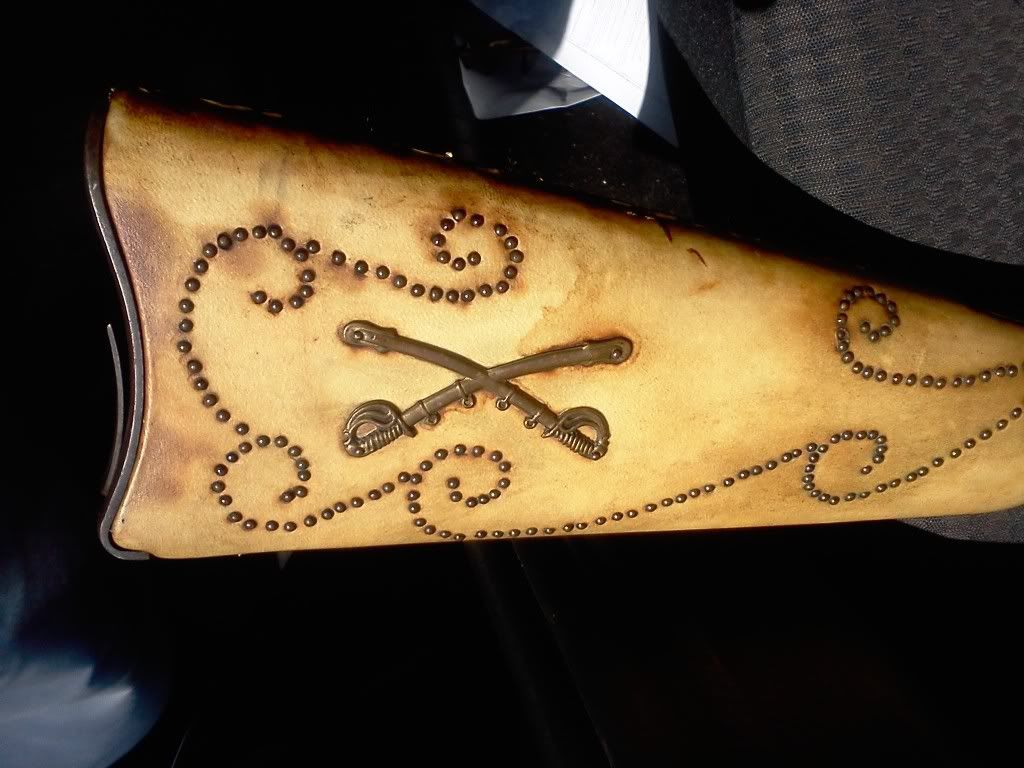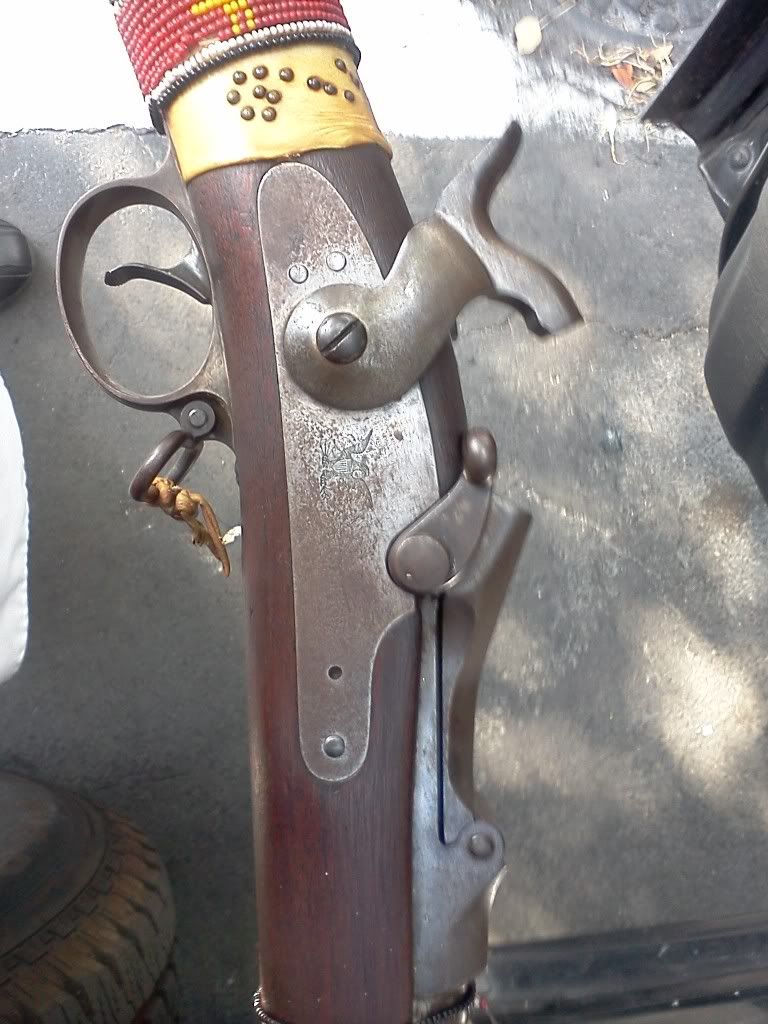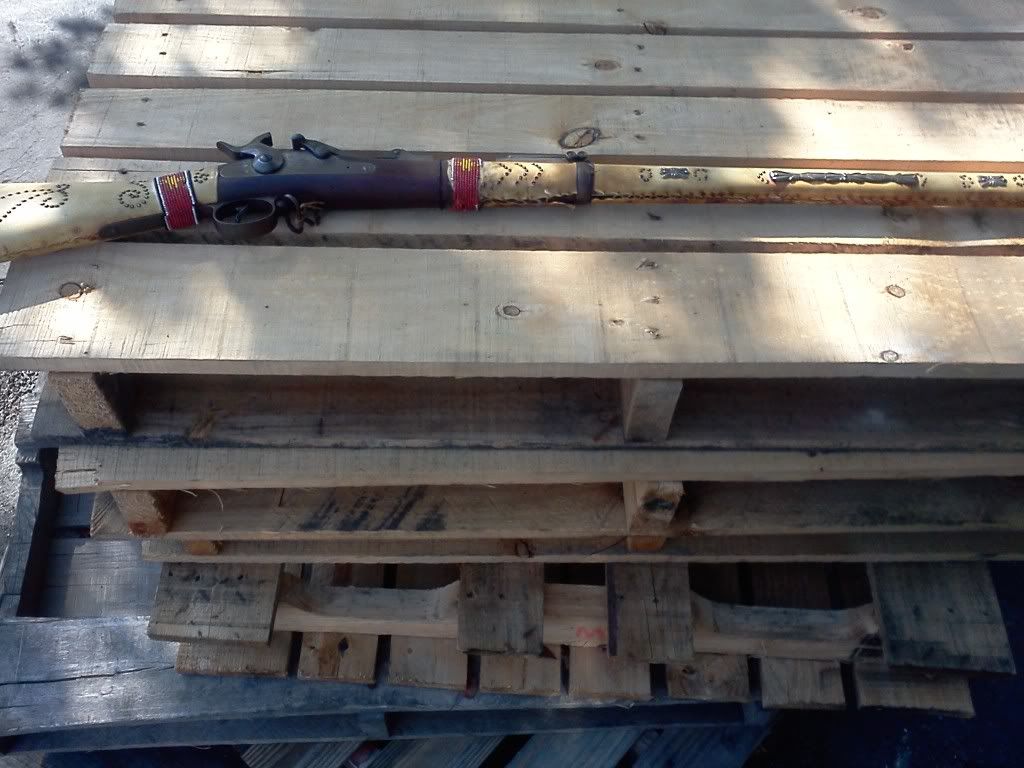Since it has the ramrod bayonet feature that marks it as an 1888 model. (They used the model 1884 recievers on these as well). The 1888 was the last model of the trapdoor Springfield rifle manufactured. A majority were in .45-70 Government calibre as you stated yours is, but a few were in 30-40 Kraig. The correct sight for the 1888 is the Buffington Ladder sight, with sliding elevation and a windage screw. It is calibrated in yards. They were pretty optomistic with a 2000 yard setting. This extreme long range setting was used for mass fire by a large number of riflemen. Beyond 180-200 yards, the projectile starts dropping like a cut loose crow-bar.
As to Indian Scout useage in the Spanish American War,---- I don't know. I do know that there was some Indian useage of the trapdoor's in the American west, mostly in tribal police units. I have seen several "Indian used" weapons (mostly Winchesters and no Springfields) and for the most part they have been doctored up in an attempt increase the value of the gun. The more ornate the decoration, the more I would doubt the Indian useage claim. Most Indian guns that I have seen were beat all to pieces and the decor was mostly brass tacks on the stock in simple patterns, mostly crosses, vee's or circles. I've never seen one with hide wrapping, except when it was used to field repair a cracked/broken stock.
Without a hands on inspection, it would be very hard to make any judgement whatsoever about the "indian useage" aspect, and even then it would basically be an opinion which would be difficult, if not impossible, to document. I've also never seen, or read, of the USS stamp you mention. Many do have unit markings and rack numbers on the stock, on top and ahead of the buttplate. It is often possible to identify to which unit they were issued.
I do hope you can post some good photos of the gun, as I'm sure it is a very interesting piece.

